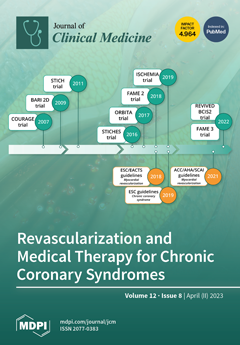Background: Data from population-based studies investigating trends in environmental factors associated with inflammatory bowel disease (IBD) is lacking. We aimed to assess long-term time trends of environmental and socioeconomic factors in IBD patients from a well-defined population-based cohort from Veszprem, Hungary. Methods: Patients were included between 1 January 1977, and 31 December 2020. Trends of environmental and socioeconomic factors were evaluated in three periods based on the decade of diagnosis, representing different therapeutic eras: cohort-A,1977–1995; cohort-B,1996–2008 (immunomodulator era); and cohort-C, 2009–2020 (biological era). Results: A total of 2240 incident patients with IBD were included (ulcerative colitis (UC) 61.2%, male 51.2%, median age at diagnosis: 35 years (IQR 29–49)). Rates of active smoking significantly decreased over time in Crohn’s disease (CD): 60.2%, 49.9%, and 38.6% in cohorts A/B/C (
p < 0.001). In UC, the rates were low and stable: 15.4%, 15.4%, and 14.5% in cohorts A/B/C (
p = 0.981). Oral contraceptive use was more common in CD compared to UC (25.0% vs. 11.6%,
p < 0.001). In UC, prevalence of appendectomy before diagnosis decreased over time: 6.4%, 5.5%, and 2.3% in cohorts A/B/C (
p = 0.013). No significant changes were found in the socio-geographic characteristics of the IBD population (urban living: UC, 59.8%/64.8%/ 62.5% (
p = 0.309) and CD, 62.5%/ 62.0%/ 59.0% (
p = 0.636), in cohorts A/B/C). A greater percentage of patients had completed secondary school as the highest education level in later cohorts in both UC (42.9%/50.2%/51.6%,
p < 0.001) and CD (49.2%/51.7%/59.5%,
p = 0.002). A higher percentage of skilled workers (34.4%/36.2%/38.9%,
p = 0.027) was found in UC, but not in CD (
p = 0.454). Conclusion: The association between trends of known environmental factors and IBD is complex. Smoking has become less prevalent in CD, but no other major changes occurred in socioeconomic factors over the last four decades that could explain the sharp increase in IBD incidence.
Full article






